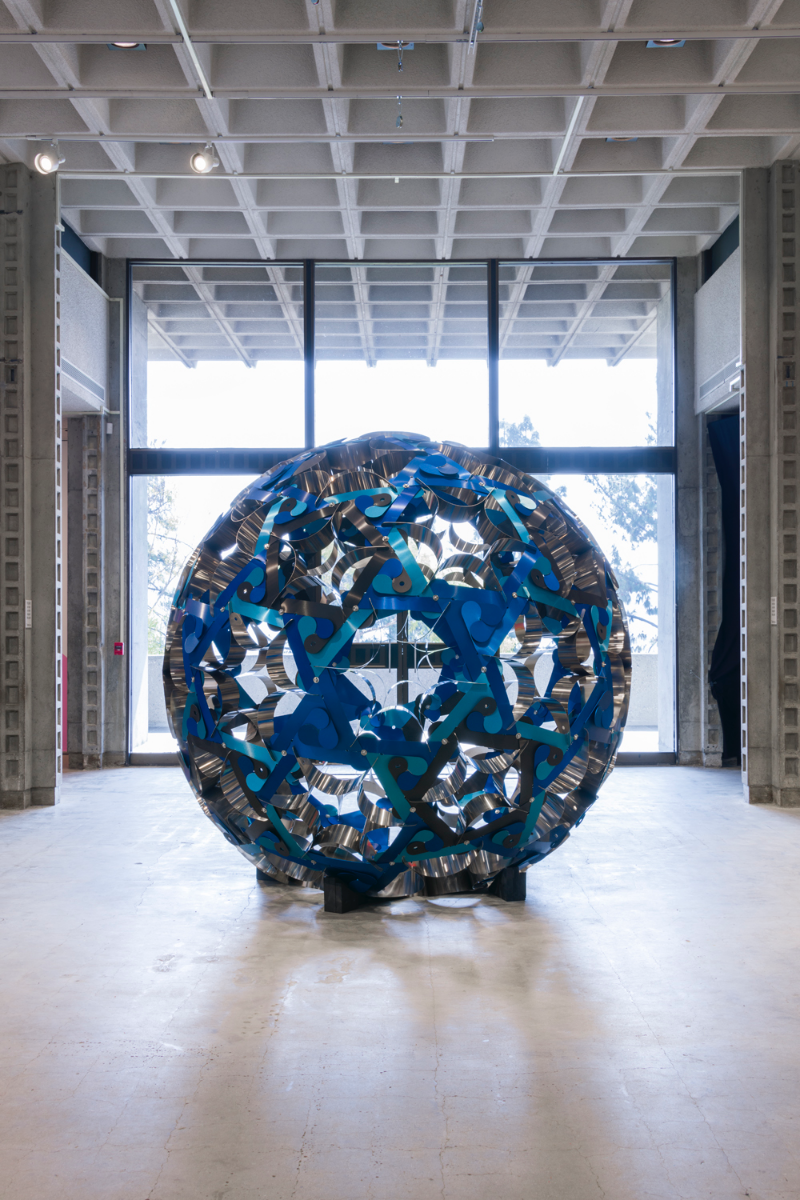It is always a thrill to see the Annual City of LA (COLA) exhibition at the Los Angeles Municipal Art Gallery (LAMAG). The exhibition is a celebration of a year-long unrestricted fellowship awarded by the Los Angeles Department of Cultural Affairs to a small group of dedicated and committed mid-career artists. In many ways, they are given carte blanche to take on something new. In the past, some artists have risen to this challenge and stepped outside their comfort zones, while others have continued along familiar trajectories. Because the COLA fellowships are awarded on individual merit, the artists are not thematically linked, so often the resulting exhibition appears to be a mishmash of unrelated projects.
That being said, each artist is given ample space to present multiple artworks or an installation, and while Steven Wong of the LA Municipal Art Gallery is named as the show’s curator, it is not curated, per se. The 2018 iteration is in no way inclusive or representative of all art being created in Los Angeles at this moment. However, it points to an increased desire to use one’s art to speak out about today’s social and political climate. While aesthetics are still an important consideration, the 2018 COLA exhibition provides insights into the many ways artists weave compelling narratives with political, environmental and social causes into beautifully crafted works of art.
Many of this year’s COLA artists have embraced issues ranging from the personal to the political, pushing their work to new levels of inquiry and formal attainment. Unexpectedly, there are more experimental and installation-based works than traditional painting or sculpture. During the opening, there was a long line of visitors patiently waiting to enter Cassils’ darkened sound-space: Aline’s Orchard (Between Scandal and Oblivion) (all works 2016–18). In this work, Cassils created an immersive environment filled with the sounds and smells from the orchards that once surrounded Barnsdall Park, then a popular gay cruising ground. Cassils’ evocative piece calls attention to initiatives that challenge sexual freedom and expression.
Like Cassils, Sandra de la Loza investigates aspects of LA’s past by focusing on the subject of early transportation and the plight of Mexican laborers to shed new light on this history. Her mixed-media installation, Pacific Electric Railway Strike of 1903 includes redacted texts, a video projection, protest banners and a bicycle-driven float culled from images documenting the history of transportation in Los Angeles. Michelle Dizon also draws from the past. She creates an evocative installation—The Archive’s Fold, that includes a slide show, images, wall text, as well as a video in which she juxtaposes personal family photographs and images of the U.S. occupation of the Philippines at the turn of the 20th century with images of current wars. The narrative is told through the eyes of a fictitious daughter living in the future and looking back into the past.
June Edmonds creates colorful abstract paintings with thick textures through the additive process of placing short brush strokes next to each other making quasi-geometric patterns. In one of her new paintings, she reclaims the American flag, painting the stripes in a wide range of skin tones. Like Edmonds, Terry Braunstein also conflates the personal and the political. Her photomontages, installations and artist’s books are assemblages that take cues from DADA and Surrealism, yet are infused with both feminist and personal narratives. Braunstein’s installation, filled with small cut-outs of figures and miscellaneous objects, is not a quick read. Time is required to digest her intimate and universal stories.
Tim Durfee and Doris Sung blur the boundaries between architecture and sculpture. Sung’s exquisite Fuller is made from thermobimetal, aluminum and steel. As viewers enter the gallery space they are immediately drawn to this nine-foot sphere with interlocking metallic and blue shapes and from there are equally seduced by Tim Durfee’s Capitol, a floor to ceiling sculpture made from wood, paint and plastic. Also included in the exhibition are documentary style photographs by Dave Hullfish Bailey, landscape photographs and graphite rubbings of messages made by 19th century settlers found along the Oregon Trail by Julie Shafer, a charged video installation about today’s political climate and pop culture by Michele O’Marah, as well as Guillermo Bert’s enigmatic digital projections on tumbleweeds.
Traversing the space at LAMAG is a rewarding experience for those who value content over form. While aesthetic experiences can provide a respite from thinking about environmental, social and political woes, this year’s fellowship recipients have successfully integrated personal and universal messages into their artistic practice, creating beautifully crafted and thoughtful works that are engaging on multiple levels.





















0 Comments